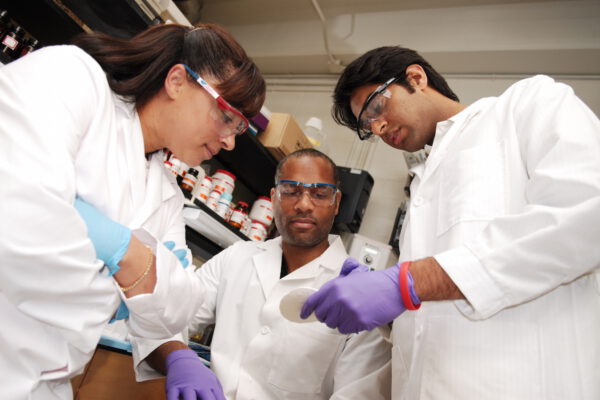Strengthening U.S. Competitiveness by Attracting International STEM Talent
Title: International Talent Programs in the Changing Global Environment
Source: The National Academies of Sciences, Engineering, and Medicine
Commissioned by the U.S. Department of Defense, a recent National Academies report on international talent programs highlights the critical importance of global recruitment in advancing U.S. STEM research. It offers strategic recommendations to the U.S. government, universities, and civil society to improve the country’s ability to attract and retain international talent.
Amid growing global competition, the U.S. is falling behind other Organisation for Economic Co-operation and Development (OECD) member countries in attracting international talent due in part to immigration barriers such as green card backlogs and the lottery-based H-1B visa, which complicate permanent residency for foreign STEM graduates. The report emphasizes that nations with modernized visa policies are outperforming at attracting and retaining foreign talent. The lack of a national talent strategy is a significant factor that has weakened the U.S.’s attractiveness to international talents. Consequently, many international students who pursue undergraduate and master’s degrees in the U.S. return to their home countries after graduation.
In response to these pressures, the report offers several key findings and recommendations to help the U.S. regain its leadership in STEM by attracting and retaining top international talent.
Key findings
- The STEM workforce is paramount for the U.S. to sustain innovation, economic competitiveness, and national security; however, this is not sustainable just through domestic STEM talent, as the demand exceeds the supply.
- Recruitment and retention of foreign STEM talent ensures the U.S. stays the global leader in science and technology and grows economically and culturally.
- While the U.S. continues to be attractive to foreign talent, it lacks a STEM talent strategy across federal agencies, unlike other countries.
- Inadequate comprehensive research and security-related policies have slowed down international collaboration and exchange of ideas.
Key recommendations: While the report has 11 recommendations, we only highlight higher education-related recommendations. They include the following:
- Congress and the White House should develop comprehensive immigration policies that support recruitment and retention of international talent. This includes simplifying and streamlining permanent residency and citizenship pathways for qualified foreign-born STEM talents and graduates of U.S. institutions as well as authorizing additional green cards and reducing barriers for foreign STEM talents.
- The U.S. government, specifically the Office of Science and Technology Policy, should oversee the coordination of a whole-of-government talent strategy including national talent recruitment and retention approaches for international researchers at all levels of experience to be implemented by federal departments and agencies.
- To address concerns that arise from having foreign-born researchers involved in areas critical to U.S. national security, federal funding agencies should work together and prioritize transparency in international research collaborations and assess risks on a case-by-case basis rather than using broad categorizations.
- The U.S. government should work with universities, industry, national laboratories, and the broader scientific community to advance robust international research partnerships and talent exchange while promoting openness, transparency, and research security.
- To facilitate the development and flow of global talent, ensure the robust exchange of ideas, and support the U.S. innovation ecosystem, the U.S. government should support universities, foundations, and industry in forging strong international research partnerships and building educational and research capacity, including in low- and middle-income countries and less developed countries in the Global South.
- Federal, state, local, and tribal governments must prioritize proactive efforts to strengthen domestic STEM pipelines as a key component of the national security innovation base.
- Higher education associations, scientific societies, and industry groups and leaders should engage in efforts to educate federal and state policymakers and staff on issues including the importance of foreign talent, the economic competitiveness and national security value of foreign talent, the importance of an open scientific ecosystem, the importance of international research collaborations, the current models for funding research, and current research security issues.
For a link to the full report, click here.
—Ngan Nguyen and Melissa Ortiz
If you have any questions or comments about this blog post, please contact us.


